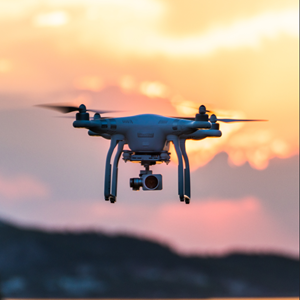Equinor, Norwegian airport regulator to deploy drones over North Sea oil and gas rigs
(Bloomberg) – Equinor ASA and Norwegian airport regulator Avinor aim to make “advanced drone operations” over the North Sea common place to make it easier to inspect rigs and cut down the vast distances between the oil and gas platforms.
Establishing an unmanned air traffic system will make it easier to employ drones up and down Norway’s coast, with Equinor anticipating thousands of flights between installations in the coming years, Equinor’s Executive Vice President for Technology, Digital and Innovation, Hege Skryseth, said Thursday. The company is also looking into using underwater drones, with a test run planned for May.
With the vehicles becoming more ubiquitous, the approach for flight approvals needs updating, air transport adviser Alexander Blokhus said. The work with Avinor will cut flight approval times down to 30 minutes, from a month today, he said, adding that in the future there will be anywhere between 10 and 15 types of drones in use offshore, capable of carrying loads of a ton or more.
“When we come to realize this, it is going to be a very important part of our business going forward,” Skryseth said, speaking in an interview following a robot and drone demonstration at Equinor’s Karsto natural gas production facility Thursday. “When it comes to drones, I think we are only at the beginning.”
In August, the Norwegian oil and gas giant partnered with Nordic Unmanned to complete the world’s first logistical drone flight between two offshore installations - Gullfaks A and B. A total of 12 landings were carried out over a two-week period, with the drones carrying everything from spare keys to drilling equipment. A multi-leg journey of about 185 kilometers (115 miles) with a remotely piloted drone is planned for later this year.
“This is super important when it comes to the ambitions we have for escalating the use of drones at scale,” Skryseth said, of the Avinor agreement. “It is important to have a formalized, safe system.”
Equinor is also exploring the use of robots to address jobs that are especially dirty, far away, boring or dangerous. Robots being tested both on and offshore are equipped with a thermal camera for detecting gas leaks, video and audio recording equipment, Svein Ivar Sagatun, Equinor’s head of robotics and drones, said Thursday. They can be used for routine inspections or even outfitted with soap and a hose for cleaning.
Drones both above and below water also have great potential when it comes to monitoring the Norway’s energy infrastructure, Skryseth said. Security on Norway’s continental shelf remains high following the sabotage of the Nordstream pipelines in September last year, raising the stakes in Europe’s energy conflict with Russia.



